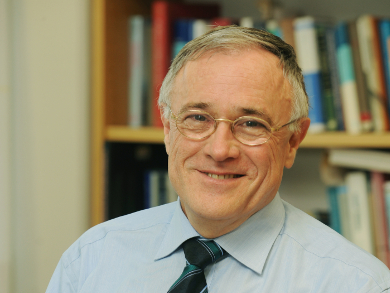Interview with Klaus Müllen
The biggest challenge facing scientists 10 years ago was … making complex molecules, but not only natural products.
And today … extending molecular into supramolecular control and thus covering the whole length scale from the molecular into the macroscopic world. This is where function comes from.
The biggest challenge facing society 10 years ago was … the “usual suspects”, health, water, energy, sustainability, and this for the whole world.
And today … the same.
The best thing about my job 10 years ago was … convincing the world of materials science that precision synthesis is an indispensable tool.
And today … the same.
My greatest motivation 10 years ago was … electronic materials.
And today … transport properties of all kinds. Transport relates to molecules and ions, but also to charge carriers and energy.
In a spare hour 10 years ago … I read about history.
And today … the same.
My favorite piece of research from the past 10 years is … drug delivery with a special family of dendrimers.
My most exciting discovery in the past 10 years has been … synthesizing nanographens and graphene nanoribbons.
If I had won the lottery 10 years ago … I would now be the same.
The most significant scientific advance of the past 10 years has been … much improved synthetic methods.
The biggest societal change in the past 10 years has been … global responsibility.
| Klaus Müllen
|
|
|
Date of birth |
January 2, 1947 |
|
Position |
Director, Max Planck Institute for Polymer Research, Mainz, Germany |
|
Homepage |
|
|
Education |
Undergraduate education University of Cologne, Germany Ph.D. University of Basel, Switzerland Postdoc ETH Zurich, Switzerland |
Featured Article
- A Crown Ether Decorated Dibenzocoronene Tetracarboxdiimide Chromophore: Synthesis, Sensing, and Self-Organization,
Yingjie Ma, Tomasz Marszalek, Zhongyi Yuan, Rene Stangenberg, Wojciech Pisula, Long Chen, Klaus Müllen,
Chem. Asian J. 2014.
DOI: 10.1002/asia.201403037In this paper, we report the synthesis of a supramolecular π-π synthon based on a disc-like macrocyclic dibenzocoronene tetracarboxdiimide containing two benzo-21-crown-7 groups. The title compound exhibits different liquid-crystalline behavior upon complexation with Pb2+ or K+. This feature results in tunable intermolecular π-stacking distances, controllable face-on or edge-on molecular self-assembly on surfaces, and variable fluorescence in solution.
Our work will stimulate further research into covalently “decorating” flexible molecular recognition motifs onto rigid disc-shape molecules to build up new functional supramolecular π-conjugated systems.
- See all interviews in ChemViews Magazine





![Synthesis of [c2]Daisy Chains via Mechanochemistry](https://www.chemistryviews.org/wp-content/uploads/2025/04/202504_RotaxanesWithSolidStateMechanochemistry-125x94.png)